Jasper Johns, master virtuoso of the double, one of the most influential of American painters, in massive Philly-NYC exhibition. PMA and Whitney show 500-plus works by Johns — arguably the most influential American painter of the 20th century.
by Judith Stein, Published October 24, 2021 in The Philadelphia Inquirer.
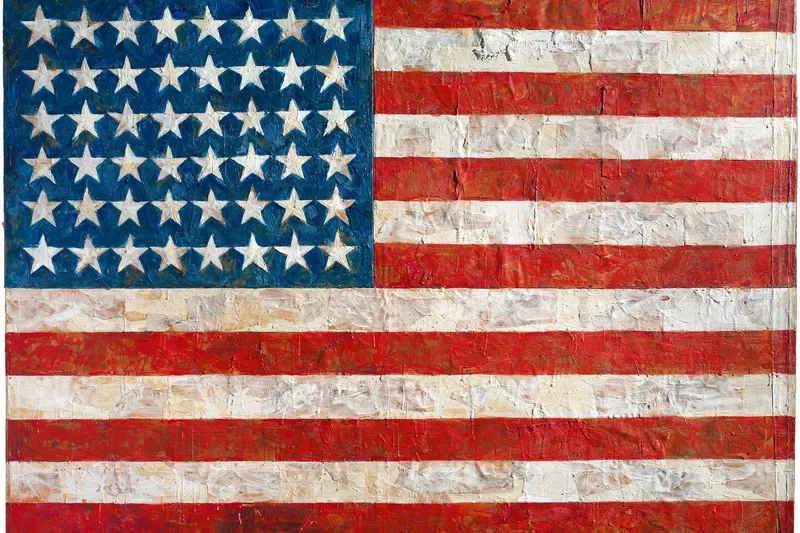
The ability to mean two things at once is the essence of irony.
And doubling is central to “Jasper Johns: Mind/Mirror,” a mammoth retrospective of a virtuoso ironist, simultaneously on view at the Philadelphia Museum of Art and the Whitney Museum of American Art.
Cocurators Carlos Basualdo of the Philadelphia Museum and the Whitney’s Scott Rothkopf, assisted by Sarah Vogelman and Lauren Young, gathered more than 500 of Jasper Johns’ paintings, drawings, prints, and sculpture, and assigned roughly half to each institution. Many have never or only rarely been exhibited before.
The twin installations are more fraternal than identical. The same ten thematic categories, variously interpreted, structure both halves. While Philadelphia focuses on images of numbers in its “First Motifs” section, for example, the Whitney highlights flags and maps. In describing the shows’ contents in a public conversation with Rothkopf (available on the Whitney’s website), Basualdo said with a smile: “Everything is unique, and everything is part of a series.”
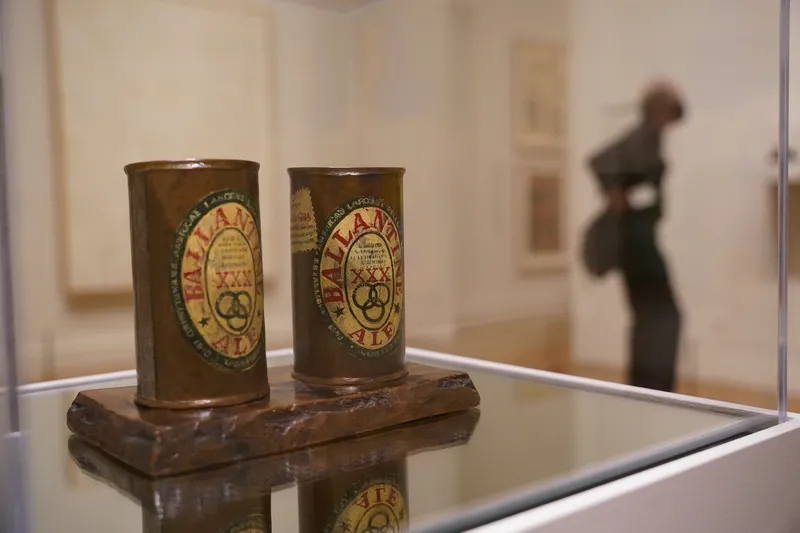
Perhaps the most influential American artist of the 20th century, the 91-year-old Johns came to aesthetic maturity within the network of conceptual and experimental artists in downtown Manhattan that included John Cage, Merce Cunningham, and Robert Rauschenberg, who was his lover for a time.
Cage’s interest in chance in the creative process is early manifest in Johns’ intriguing False Start (1959), with its randomly placed bursts of color.
Although the artist’s gestural brushwork and painterly drips were symbolic links to his abstract expressionist elders, the banal, enigmatic images he exhibited at the start of his career, pointed toward the emotionally cooler future of Pop, Minimal, and Conceptual art. At Johns’ debut in 1958, a prescient reviewer noted that his “genuinely new art assaults and enlivens the mind and the eye with the exhilaration of discovery.”
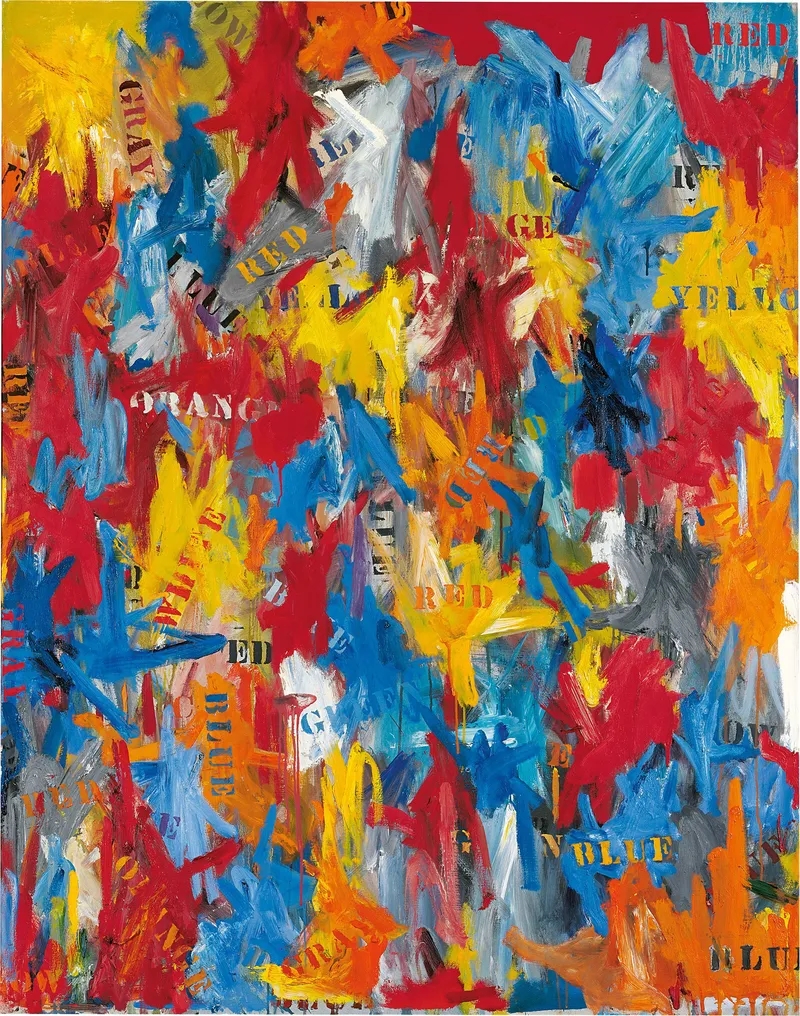
In Philadelphia, “Mind/Mirror” begins with the disembodied voice of John Cage reading Johns’ cryptic texts. Mildly annoying, the sound fades as we approach his iconic Flag (1954-55), among the artist’s greatest works. The idea to paint “something the mind already knows,” in the artist’s words, came to him in a dream.
The flag is both subject and object, a startlingly simple and infinitely nuanced image assembled from collaged stars, newsprint stripes, and the molten, pigmented wax called encaustic. The palpable texture and body of encaustic, thick and quick drying, well suited Johns, who delights in the world of things as much as the intangible realm of ideas.
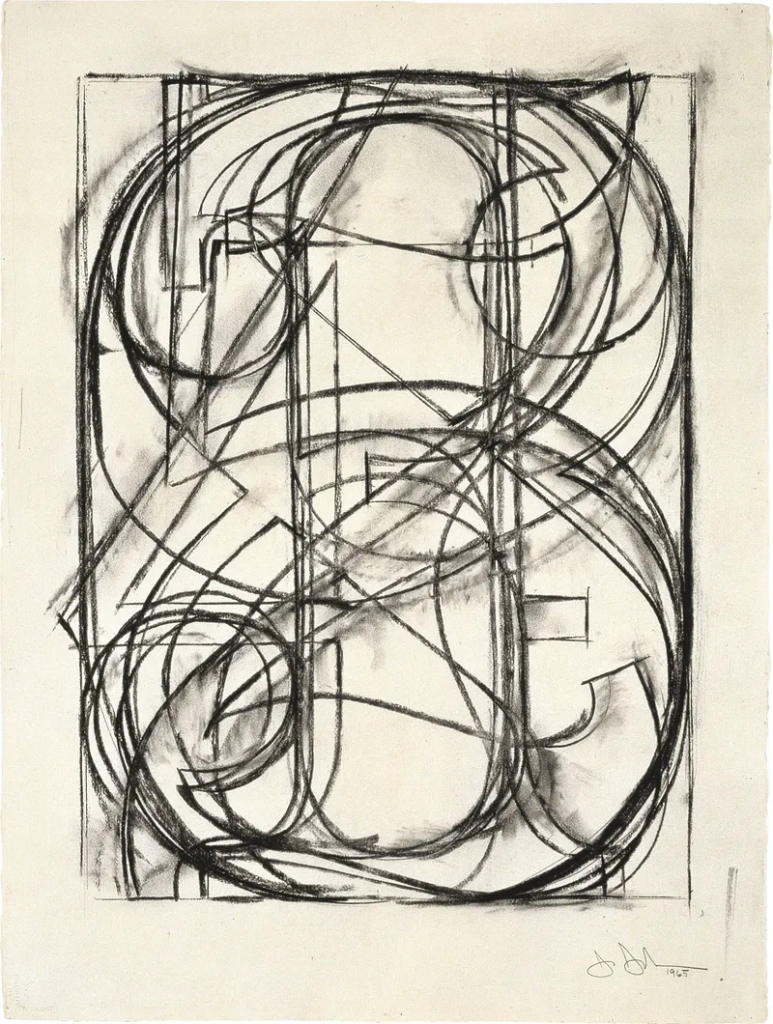
During the past seven decades, Johns devised a working vocabulary of motifs that reoccur, but never the same way twice. One favored subject is the artist’s materials — paint brushes, rulers, and canvases. In Canvas (1956), Johns inserted one stretched canvas inside another, teasingly flipping it back to front to block our view of whatever might be on the “right” side.
The color scheme is grisaille, that is, white, black, and shades of gray. Historically, painters used grisaille to create the illusion of sculpture. In Johns’ hands, this limited palette seems a hidden reference to the literal dimension of space that all flat paintings lack.
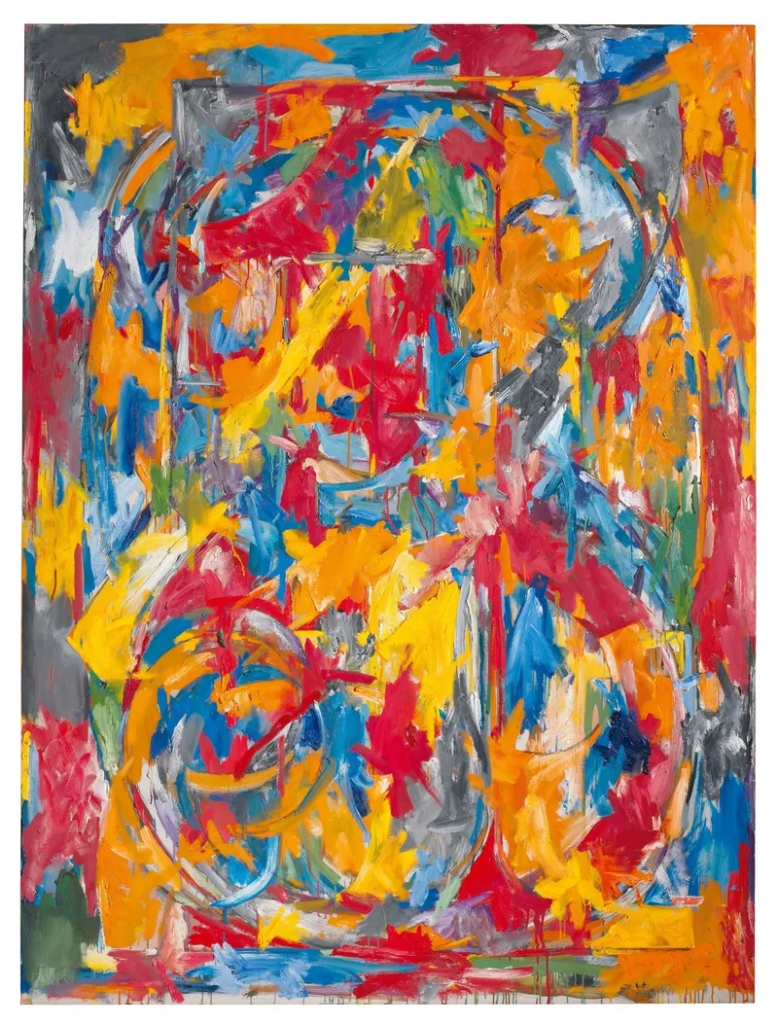
Painted Bronze (1960) is a devilishly deceptive sculpture with a hilarious origin story. Each curator enthroned a set of Ballantine ale cans on a mirrored perch at the center of their respective “Doubles and Reflections” sections. Because it was cast in an edition of two, it’s able to be in two museums at the same time.
After hearing a gripe that his persuasive dealer Leo Castelli could even sell two beer cans, Johns made such a sculpture, which Castelli promptly sold.
The relief Fountain Pen (1962) is a plaster cast of a pen that was a birthday gift to the son of the collector who purchased Painted Bronze. It alludes to Marcel Duchamp’s ready-made art objects and to pens as stereotypic bar mitzvah presents.
Early in their careers, Johns and Rauschenberg made a pilgrimage to Philadelphia to see the museum’s unmatched holdings of Duchamp’s work. In later years, the PMA installed a group of Johns’ sculptures in the gallery leading to its Duchamp rooms. These and other long-term loans from the artist’s studio bespeak his high regard for the museum’s late director, Anne d’Harnoncourt, a Duchamp scholar.
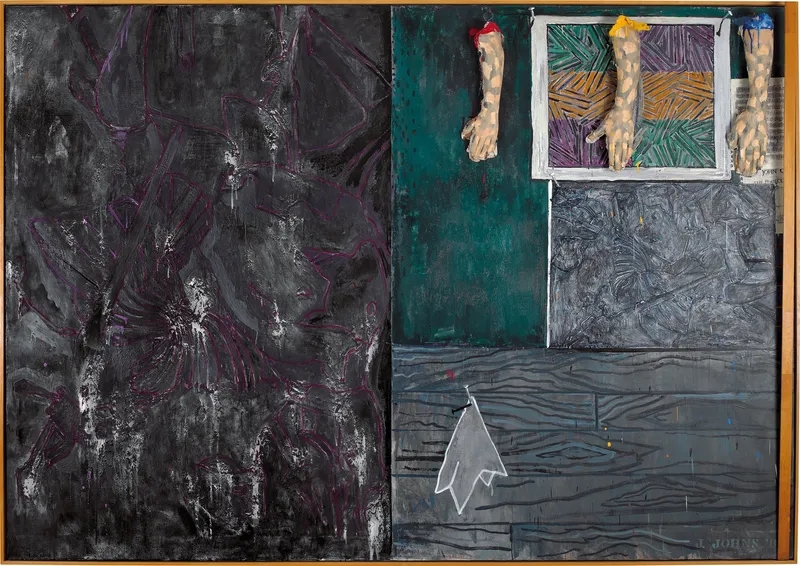
For the PMA’s thematic Place section, the curatorial team focused on Japan, a country whose art and culture have had a major impact on Johns’ creative life. His majestic Usuyuki (1977), an encaustic painting in three parts, is one of the show’s gems.
Its title references a Kabuki princess whose name means “light snow.” Johns, an infrequent explainer, has said that it concerns “the fleeting quality of beauty in the world.” It’s a stunning abstract landscape of crosshatched patches, poignant wax spills, and faint white flurries. Hanging nearby is a series of exquisite prints that Johns made in Japan, as well as work by his Japanese contemporaries, verifying that influence flowed in two directions.

Keep your eye out for encrypted references to photographic imagery and the history of art. Excellent signage cues us when Johns figuratively doffs his hat at Grünewald’s Isenheim Altarpiece. Perilous Night (1982), a somber mélange of sculpture and painting, seems a chilling forecast of the AIDS crisis. As the emotional gap between Johns and his art closed in the 1980s, themes of loss, mortality, and death became more frequent.
Yet levity abides. A series of small, sculpt-metal reliefs of animated skeletons (2019) wait patiently in the show’s final gallery. They call to mind Mexico’s Day of the Dead and Durer’s Death and the Maiden. Some sport pork pie hats or hold a catenary jump rope. My favorite sits on a huge skull, its outstretched arms a dead ringer for Christ’s pose in Leonardo’s Last Supper.
Of the many reasons why “Mind/Mirror” is unusual is the curators’ decision to integrate the artist’s paintings with his unique prints, more typically shown separately. Johns’ luscious, one-of-a-kind monoprints, his trial proofs that variously test the same design, and the working proofs that he’s added to by hand, vividly express his inventive genius.
At the PMA, a long gallery for prints adjacent to the principal rooms pays homage to John Cage. His unmistakable voice accompanies our journey past walls of Johns’ editioned prints whose display is periodically rotated and randomly sequenced. Several await in temporary storage, visible inside a locked, chain link cage, presumably pun intended.

There’s no wrong way to see “Mind/Mirror.”
In his early sketchbook notes, Johns envisioned a passive “Watchman,” who “falls ‘into’ the trap of looking,” and an engaged spy, “who must remember & must remember himself & his remembering.” Choose your strategy and track the artist’s footprints as you go. It’s an exhilarating experience.